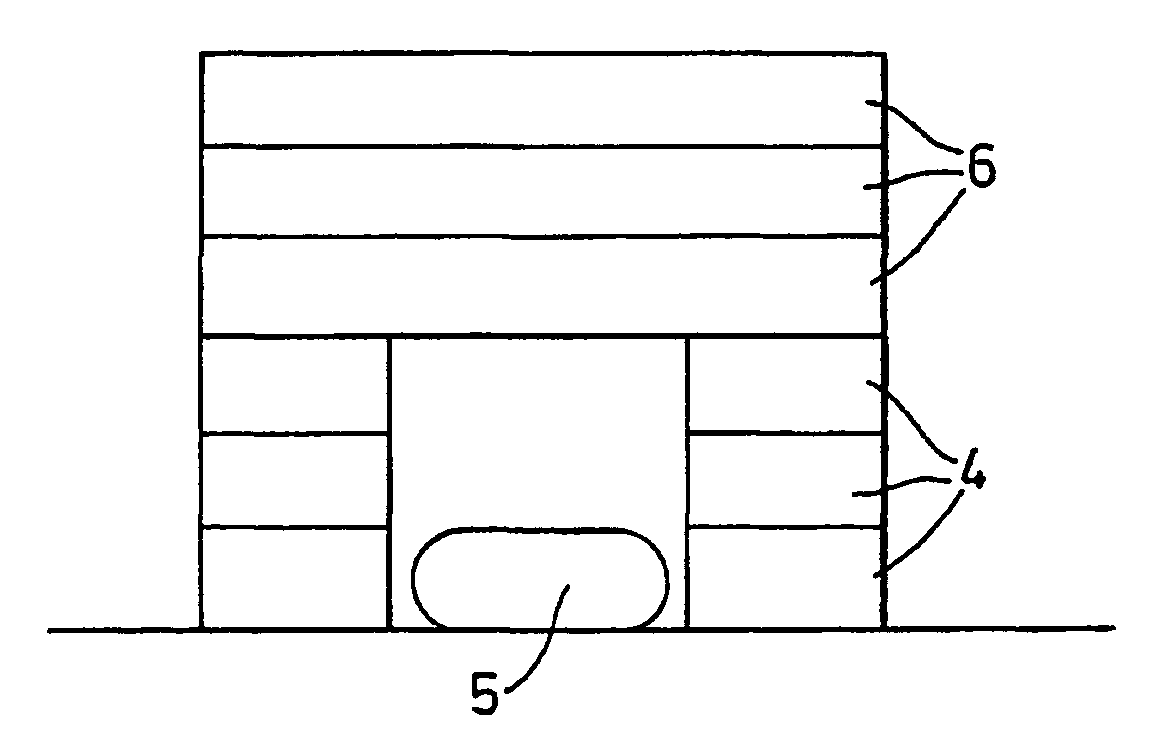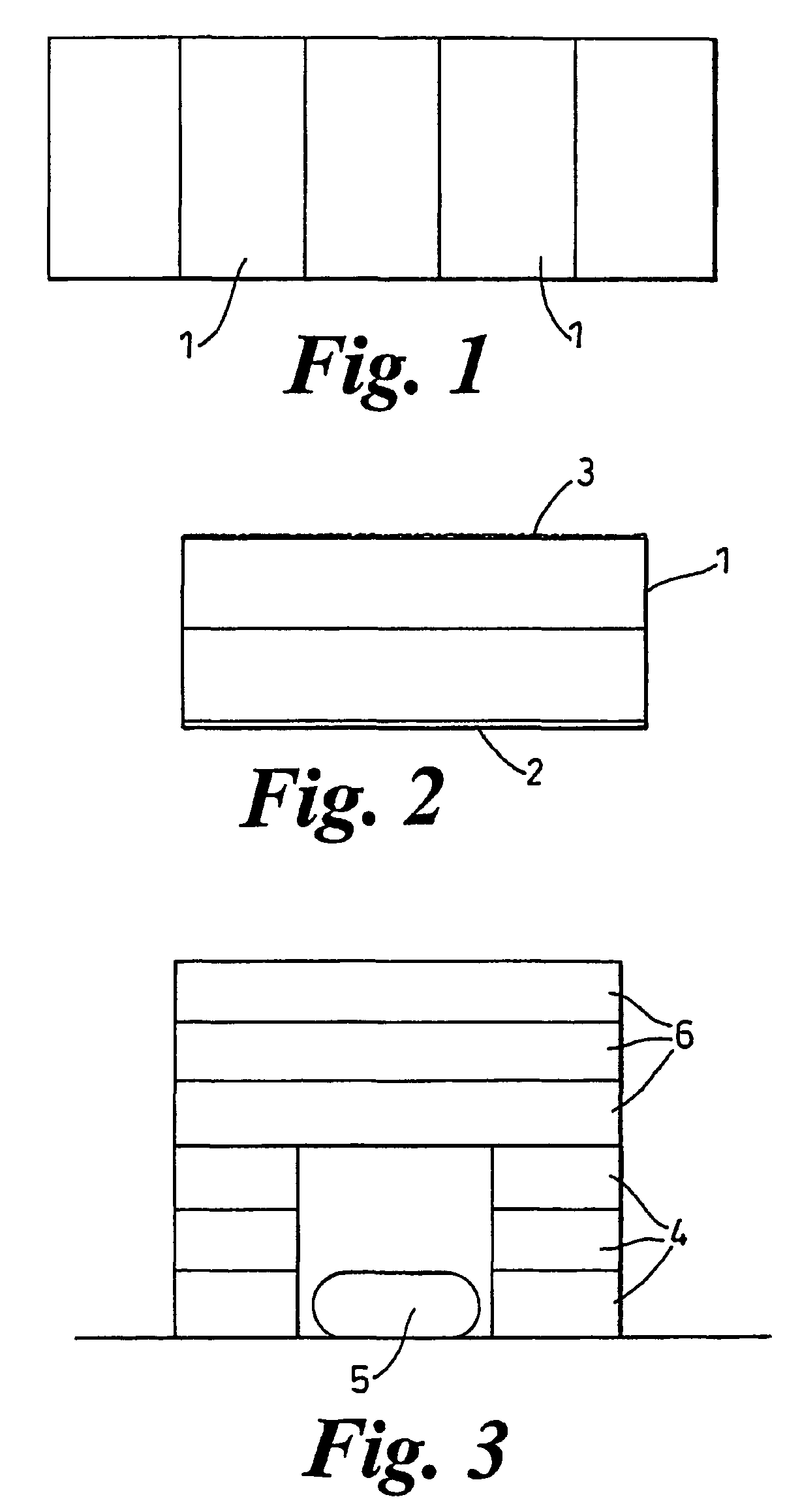Blast protection structures
a technology for protecting structures and blasts, applied in the direction of flexible container closures, transportation and packaging, sacks, etc., can solve the problem of insufficient quantity of water, and achieve the effect of reducing the effect of blast escape, and reducing the construction difficulty
- Summary
- Abstract
- Description
- Claims
- Application Information
AI Technical Summary
Benefits of technology
Problems solved by technology
Method used
Image
Examples
Embodiment Construction
[0026]The path of FIG. 1 is made up from a plurality of elongate watertight bags 1, transverse to the direction of the path. When empty they can be rolled up, and when rolled out flat they can be filled with water sequentially so that each bag becomes hard, but not absolutely rigid. They are preferably made of drop-stitch material, as mentioned above, so that the path is generally flat.
[0027]Each bag is double chambered, one above the other as shown in FIG. 2. The underside 2 is sheathed in the material known as Kevlar, as protection against rough surfaces and for blast mitigation. The upper surface 3 has a non-slip coating or layer applied to it. Typically the total depth might be of the order of 200 mm (each chamber 100 mm) and the dimension in the longitudinal direction of the path 1.45 m. The width can be selected as desired.
[0028]In FIG. 3, a set of annular bags 4 can be built up into a drum-like wall to surround a device 5 that might explode. This wall is capped by several dis...
PUM
 Login to View More
Login to View More Abstract
Description
Claims
Application Information
 Login to View More
Login to View More - R&D
- Intellectual Property
- Life Sciences
- Materials
- Tech Scout
- Unparalleled Data Quality
- Higher Quality Content
- 60% Fewer Hallucinations
Browse by: Latest US Patents, China's latest patents, Technical Efficacy Thesaurus, Application Domain, Technology Topic, Popular Technical Reports.
© 2025 PatSnap. All rights reserved.Legal|Privacy policy|Modern Slavery Act Transparency Statement|Sitemap|About US| Contact US: help@patsnap.com


